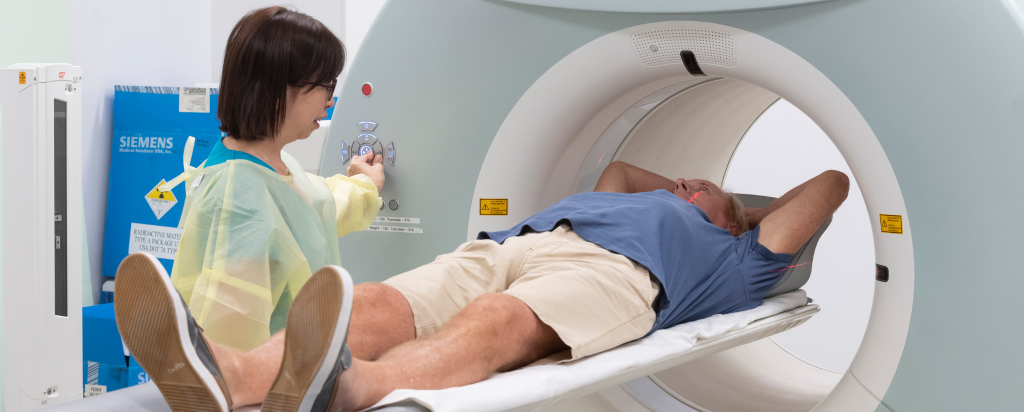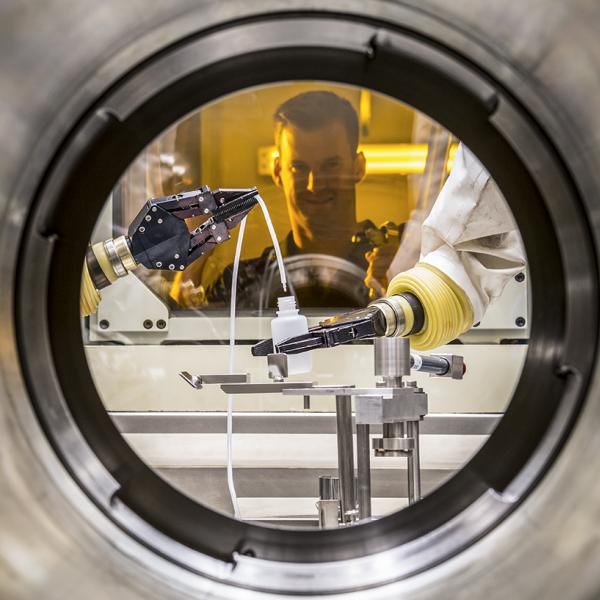
Did you know, every Australian is likely to benefit from nuclear medicine at some point in their lifetime and on average each Australian will benefit from at least two nuclear medicine procedures *.
ANSTO's Lucas Heights Precinct in Sydney is home to three key facilities that enable the advanced manufacturing and distribution of nuclear medicines for Australians. It's also where researchers are working to develop new nuclear medicines to help fight diseases, including cancer.
To explain how nuclear medicine is manufactured and distributed across Australia and to share insights into some of the new and emerging nuclear medicines on the horizon, ANSTO recently hosted an Ask Us Anything event for nuclear medicine.
The online event was developed in partnership with the Australian Institute of Physics (AIP) and leaders from across the Australian nuclear medicine community. The event included a series of presentations followed by an open Q&A with the wider community.
The community was very interested in how nuclear medicines work and what they are used for. Not surprisingly, there were many questions about new and emerging nuclear medicines and how they may help both diagnose and treat a range of cancers.
“We are really pleased by the public interest in this event,” said Cassandra Casey, General Manager, ANSTO Communications and Stakeholder Engagement.
“ANSTO is planning more of these online events as they are a great way to have a conversation with the community and answer questions .”
Thanks to Prof Geoff Currie AM, Professor Dale Bailey, Prof Andrew Scott AM, Dr Nigel Lengkeek, Leena Hogan, Jason Chakovski, and Justine Murison, for their involvement in the event.
If you missed the Ask Us Anything - Nuclear Medicine, a full recording is available here:
Some important facts about nuclear medicine:
- About 75-80 per cent of nuclear medicine isotopes used in Australia come from ANSTO’s Lucas Heights campus in Sydney. Through ANSTO, Australia is a world leader in the advanced manufacturing of diagnostic and therapeutic nuclear medicines.
- There are approx. 700,000* nuclear medicine procedures each year in Australia. These include diagnostic imaging scans (SPECT and PET) to aid in patient management, and a growing range of therapies.
- On average, ANSTO’s radioisotopes provide 10,000 - 12,000 nuclear medicine procedures that benefit Australians each week*.
- Nuclear medicine imaging provides detailed physiological and molecular information to help diagnose cancers and investigate other conditions in most organs and tissues in the body (for example the heart, brain, lungs, bones, liver, kidneys, thyroid and skeleton). An increasing range of therapeutic nuclear medicines are being introduced to treat cancer patients.
*based on published Medicare statistics combined with non-MBS data sourced from the nuclear medicine community http://medicarestatistics.humanservices.gov.au/statistics/mbs_group.jsp


